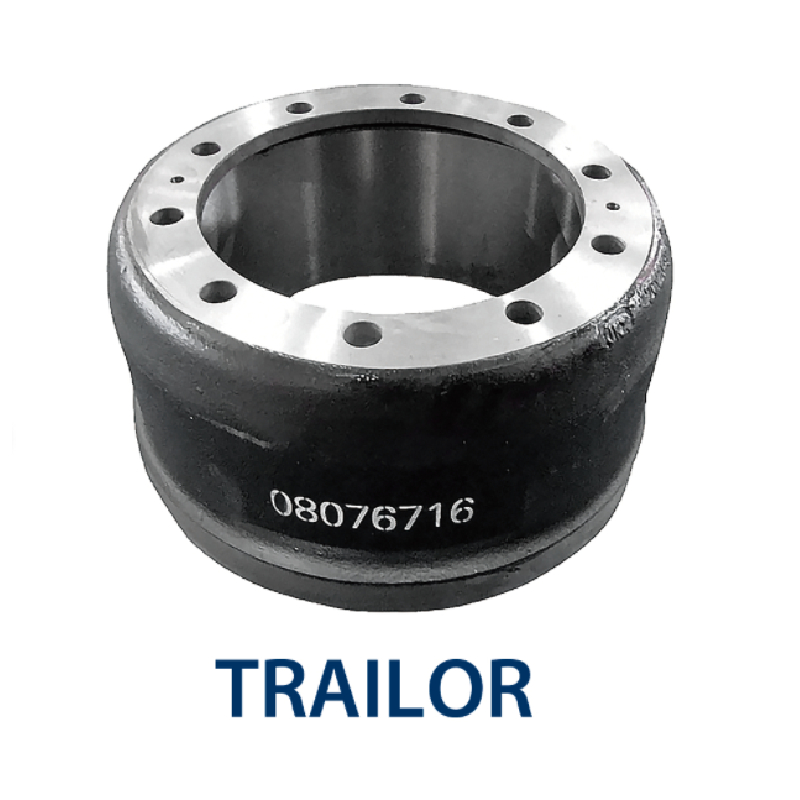Nov . 08, 2024 18:01 Back to list
are brake drums the same as rotors
Are Brake Drums the Same as Rotors?
When it comes to understanding the braking system of vehicles, many people often wonder whether brake drums and rotors serve the same purpose or if they are fundamentally different components. This article will delve into the definitions, functions, differences, and similarities of brake drums and rotors, providing a clear understanding of their roles in a vehicle's braking system.
Understanding Brake Drums
Brake drums are components of a drum brake system, which is commonly found in older vehicles or in certain specific applications, such as the rear brakes of some cars and trucks. A brake drum is a cylindrical component that rotates with the wheel. Inside the drum, there are brake shoes which are arched pieces of metal lined with friction material. When the driver presses the brake pedal, hydraulic pressure pushes the brake shoes outward against the inner surface of the drum, creating friction that slows down or stops the vehicle.
Brake drums are typically heavier and bulkier than rotors, and they function well in providing ample stopping power, especially for vehicles with lighter loads. However, they can experience issues such as brake fade—especially under heavy use—due to heat buildup and potential moisture retention.
Understanding Brake Rotors
Brake rotors, on the other hand, are a crucial component of disc brake systems, which are more common in modern vehicles. A brake rotor is a flat, circular plate that is mounted on the wheel hub. The brake pads, which contain friction material, are pressed against the rotor's surface when the brake pedal is activated. This mechanism provides more consistent stopping power and better heat dissipation compared to drum brakes.
Brake rotors come in various designs, including vented and slotted types, each aiming to improve performance and cooling. They are lighter than brake drums and typically offer superior stopping power, especially in high-performance vehicles. Moreover, since they allow for better heat dissipation, rotors are less likely to suffer from brake fade.
Key Differences
While both brake drums and rotors serve the primary function of stopping the vehicle, they differ significantly in design and performance characteristics
1. Design Brake drums are closed cylinders, while rotors are flat, open discs. This affects how heat is dissipated and how maintenance is performed, with rotors generally being easier to inspect and replace.
are brake drums the same as rotors

2. Performance Disc brakes (with rotors) provide better performance under heavy use conditions. They are less susceptible to heat-related issues like fade and offer more consistent stopping power.
3. Weight Brake drums tend to be heavier, which can affect a vehicle's performance and fuel efficiency. Disc brake setups are usually lighter.
4. Maintenance Disc brakes tend to require more frequent checks and replacement of pads but have the advantage of being easier and quicker to service.
Similarities
Despite their differences, brake drums and rotors share some similarities
1. Functionality Both serve the fundamental purpose of slowing down or stopping a vehicle by converting kinetic energy into thermal energy through friction.
2. Materials Both are typically made from cast iron or other heat-resistant materials to withstand the forces and temperatures generated during braking.
3. Wear Components Both systems use components that wear out over time and need to be replaced—brake shoes for drums and brake pads for rotors.
Conclusion
In summary, while brake drums and rotors both play essential roles in a vehicle's braking system, they are not the same. Brake drums use a different mechanism and design than brake rotors, leading to varied performance characteristics and maintenance needs. Understanding these differences can help vehicle owners make more informed decisions about their brake system, particularly when it comes to maintenance, repairs, and upgrades. For most modern vehicles, disc brakes with rotors are the preferred option due to their enhanced performance and reliability.
-
FUWA: Premium Quality, Reliable Performance & Innovative Solutions
NewsAug.25,2025
-
Liza Brake Drum: Superior Quality & Performance for Safe Driving
NewsAug.24,2025
-
Iveco Brake Drum | Premium OE Quality for Daily & Eurocargo
NewsAug.22,2025
-
Your Brake Drum Man: Quality & Performance Parts
NewsAug.21,2025
-
Explore Japan: Ultimate Travel Guide & Authentic Experiences
NewsAug.19,2025
-
Your Brake Drum Man: Premium & Reliable Brake Drums for Sale
NewsAug.18,2025
